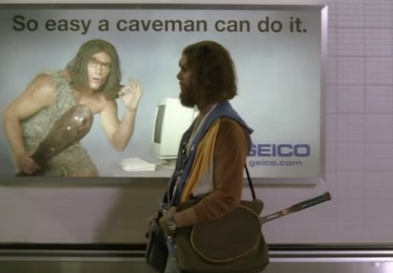When to Choose Simple Over Scalable

Remember this guy?

You, me, all of us—we need a bit more “caveman thinking” in our businesses.
***
One of my business mentors is excellent at distilling problems and finding the simplest possible solutions.
The best compliment I can think of for him (that I’m fairly certain he would agree with)?
“He’s like a caveman.”
Here’s what works about simple solutions: they allow you to take action.
Complexity takes time to untangle. And when you overcomplicate things, you waste valuable days, weeks, and months. Instead, you could be out there testing, learning, and iterating.
That’s the power of caveman thinking. It’s why “Keep It Simple” is one of the Guiding Principles in our consulting framework.
One important area where most companies need to be simpler? The conversation about scalability.
***
Build to scale. It’s critical for every entrepreneur that wants to grow, truly grow their business.
- You can’t do all the work yourself.
- You need systems and processes for efficiency and consistency.
- You can’t rely on the “tribal knowledge” of your team and sheer force of will to get things done.
All those things are true. But there’s also a time and place, even when companies are $10 million, $20 million, $50 million, when you need to roll up your sleeves and do the unscalable thing.
It won’t work forever, but it may work now.
Band-aids aren’t permanent solutions. But they ARE temporary fixes, and sometimes the temporary fix is what you need until you can put a permanent solution in place.
Let me give you an example.
Recently, a client was struggling with the performance at one of their satellite locations. The location had never been operationally sound, and the leadership was fine but not strong enough to get them back on course. Their scorecard was trending in the wrong direction, and we had to come up with a solution.
My client suggested a fix that seemed almost too simple: “I’ll go down there,” he said. “Meet with the team to help improve their performance.”
Most business advisors would have forbidden it. Instead, I asked a few questions.
How often will you go?
Probably once a week.
For how long?
6 months? 9?
Is it a good use of your time?
Probably not. But it’s a useful way for me to dive in and see what’s going on.
Do you think it will work?
Yes.
I agreed with my client. Let’s try it.
So every week, for 6+ months, the CEO of this company drove out to the satellite location, had a meeting with the team, and drove back again.
The solution was unsexy, unsustainable, and unscalable. It was plain old accountability.
Barbaric. Caveman thinking.
But it worked. And it will continue to work…and it will buy us time to come up with the solution that actually Is scalable.
***
You need scalable solutions if you want to grow.
You also need unscalable solutions to help you get to the next level.
Often, those Band-aid fixes are the ones that carry you over the danger zones of growth.

The scalable solution may be too expensive. Or too time-consuming. Or too sophisticated for where you are right now.
The caveman solution may be overly simplistic, and if you keep growing, it will definitely stop working.
But will it work today? Next month? Next year?
If the answer is yes, that simple solution may be worth considering.
Here’s a planning process you can use when adopting an unscalable solution to a long-term problem:
- Is this solution unscalable?
- Too much time, too manual, too reliant on leadership or force of personality, too reliant on someone who isn’t a perfect fit for the job.
- If yes, how long can I use this solution effectively?
- Weeks, months, years? Your best guess.
- What metrics will confirm it’s time for a different solution?
- Usually metrics tied to growth: # clients, # deals, total revenue , etc. Establish the triggers and levels for each.
- How far out should I start planning for a more permanent and scalable solution?
- Allow at least 6 months of transition if not more.
There’s no doubt that businesses, especially as they grow, have increasing levels of complexity.
In many cases, business leaders also add more complexity than is necessary to fix their problems.
When in doubt, start with caveman thinking. Simpler is often better, even if it’s not scalable (yet).



